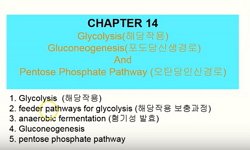The cyclic environmental conditions brought about by the 24 h rotation of the earth have allowed the evolution of endogenous circadian clocks that control the temporal alignment of behaviour and physiology, including the uptake and processing of nutri...
http://chineseinput.net/에서 pinyin(병음)방식으로 중국어를 변환할 수 있습니다.
변환된 중국어를 복사하여 사용하시면 됩니다.
- 中文 을 입력하시려면 zhongwen을 입력하시고 space를누르시면됩니다.
- 北京 을 입력하시려면 beijing을 입력하시고 space를 누르시면 됩니다.
https://www.riss.kr/link?id=A104831743
-
저자
Judit Kovac (Circadian Rhythms Group, Max Planck Institute of Biophysical Chemistry, 37077 Göttingen, Germany) ; Jana Husse (Genes and Behaviour Department, Max Planck Institute of Biophysical Chemistry, 37077 Göttingen, Germ) ; Henrik Oster (Circadian Rhythms Group, Max Planck Institute of Biophysical Chemistry, 37077 Göttingen, Germany)
- 발행기관
- 학술지명
- 권호사항
-
발행연도
2009
-
작성언어
English
- 주제어
-
등재정보
KCI등재,SCOPUS,SCIE
-
자료형태
학술저널
-
수록면
75-80(6쪽)
-
KCI 피인용횟수
40
- 제공처
-
0
상세조회 -
0
다운로드
부가정보
다국어 초록 (Multilingual Abstract)
The cyclic environmental conditions brought about by the 24 h rotation of the earth have allowed the evolution of endogenous circadian clocks that control the temporal alignment of behaviour and physiology, including the uptake and processing of nutrients. Both metabolic and circadian regulatory systems are built upon a complex feedback network connecting centres of the central nervous system and different peripheral tissues. Emerging evidence suggests that circadian clock function is closely linked to metabolic homeostasis and that rhythm disruption can contribute to the development of metabolic disease. At the same time, metabolic processes feed back into the circadian clock, affecting clock gene expression and timing of behaviour. In this review, we summarize the experimental evidence for this bimodal interaction, with a focus on the molecular mechanisms mediating this exchange, and outline the implications for clock-based and metabolic diseases.
참고문헌 (Reference)
1 Liu, C, "Tran-scriptional coactivator PGC-1alpha integrates the mammalian clock and energy metabolism" 447 : 477-481, 2007
2 Yang, S, "The role of mPer2 Clock gene in glucocorticoid and feeding rhythms" 150 : 2153-2160, 2009
3 Fontaine, C, "The orphan nuclear receptor Rev-Erbalpha is a peroxisome proliferator-activated receptor (PPAR) gamma target gene and promotes PPARgamma-induced adipocyte differentiation" 278 : 37672-37680, 2003
4 Preitner, N, "The orphan nuclear receptor REV-ERBalpha controls circadian transcription within the positive limb of the mammalian circadian oscillator" 110 : 251-260, 2002
5 Green, C.B, "The meter of metabolism" 134 : 728-742, 2008
6 Oster, H, "The interaction of light and the circadian clock network - a new therapeutic approach for the treatment of neuropsychiatric disorders?" Hauppauge, NY: Nova Science Publishers 35-65, 2008
7 Takahashi, J.S, "The genetics of mammalian circadian order and disorder: implications for physiology and disease" 9 : 764-775, 2008
8 Spanagel, R, "The clock gene Per2 influences the glutamatergic system and modulates alcohol consumption" 11 : 35-42, 2005
9 Oster, H, "The circadian rhythm of glucocorticoids is regulated by a gating mechanism residing in the adrenal cortical clock" 4 : 163-173, 2006
10 Woelfle, M.A, "The adaptive value of circadian clocks: an experimental assessment in cyanobacteria" 14 : 1481-1486, 2004
1 Liu, C, "Tran-scriptional coactivator PGC-1alpha integrates the mammalian clock and energy metabolism" 447 : 477-481, 2007
2 Yang, S, "The role of mPer2 Clock gene in glucocorticoid and feeding rhythms" 150 : 2153-2160, 2009
3 Fontaine, C, "The orphan nuclear receptor Rev-Erbalpha is a peroxisome proliferator-activated receptor (PPAR) gamma target gene and promotes PPARgamma-induced adipocyte differentiation" 278 : 37672-37680, 2003
4 Preitner, N, "The orphan nuclear receptor REV-ERBalpha controls circadian transcription within the positive limb of the mammalian circadian oscillator" 110 : 251-260, 2002
5 Green, C.B, "The meter of metabolism" 134 : 728-742, 2008
6 Oster, H, "The interaction of light and the circadian clock network - a new therapeutic approach for the treatment of neuropsychiatric disorders?" Hauppauge, NY: Nova Science Publishers 35-65, 2008
7 Takahashi, J.S, "The genetics of mammalian circadian order and disorder: implications for physiology and disease" 9 : 764-775, 2008
8 Spanagel, R, "The clock gene Per2 influences the glutamatergic system and modulates alcohol consumption" 11 : 35-42, 2005
9 Oster, H, "The circadian rhythm of glucocorticoids is regulated by a gating mechanism residing in the adrenal cortical clock" 4 : 163-173, 2006
10 Woelfle, M.A, "The adaptive value of circadian clocks: an experimental assessment in cyanobacteria" 14 : 1481-1486, 2004
11 Pittendrigh,C.S, "Temporal organization: reflections of a Darwinian clock-watcher" 55 : 16-54, 1993
12 Lefebvre, P, "Sorting out the roles of PPAR alpha in energy metabolism and vascular homeostasis" 116 : 571-580, 2006
13 Wittmann, M, "Social jetlag: misalignment of biological and social time" 23 : 497-509, 2006
14 Laposky, A.D, "Sleep and circadian rhythms: key components in the regulation of energy metabolism" 582 : 142-151, 2008
15 Van Cauter, E, "Roles of circadian rhythmicity and sleep in human glucose regulation" 18 : 716-738, 1997
16 Ando, H, "Rhythmic messenger ribonucleic acid expression of clock genes and adipocytokines in mouse visceral adipose tissue" 146 : 5631-5636, 2005
17 Yin, L, "Rev-erbalpha,a heme sensor that coordinates metabolic and circadian pathways" 318 : 1786-1789, 2007
18 Damiola, F, "Restricted feeding uncouples cir-cadian oscillators in peripheral tissues from the central pace-maker in the suprachiasmatic nucleus" 14 : 2950-2961, 2000
19 Rutter, J, "Regulation of clock and NPAS2 DNA binding by the redox state of NAD cofactors" 293 : 510-514, 2001
20 Kaasik, K, "Reciprocal regulation of haem biosynthesis and the circadian clock in mammals" 430 : 467-471, 2004
21 Canaple, L, "Reciprocal regulation of brain and muscle Arnt-like protein 1 and peroxisome proliferator-activated receptor alpha defines a novel positive feedback loop in the rodent liver circadian clock" 20 : 1715-1727, 2006
22 Balsalobre, A, "Re-setting of circadian time in peripheral tissues by glucocorticoid signaling" 289 : 2344-2347, 2000
23 Lau, P, "RORalpha regulates the expression of genes involved in lipid homeostasis in skeletal muscle cells: caveolin-3 and CPT-1 are direct targets of ROR" 279 : 36828-36840, 2004
24 Stratmann, M, "Properties, entrainment, and physiological functions of Mammalian peripheral oscillators" 21 : 494-506, 2006
25 Lamia, K.A, "Physiological significance of a peripheral tissue circadian clock" 105 : 15172-15177, 2008
26 Buijs, R.M, "Organization of circadian func-tions: interaction with the body" 153 : 341-360, 2006
27 Turek, F.W, "Obesity and metabolic syndrome in circadian Clock mutant mice" 308 : 1043-1045, 2005
28 Kaneko, K, "Obesity alters circadian expressions of molecular clock genes in the brainstem" 1263 : 58-68, 2009
29 Yang, X, "Nuclear receptor expression links the circadian clock to metabolism" 126 : 801-810, 2006
30 Dioum, E.M, "NPAS2:a gas-responsive transcription factor" 298 : 2385-2387, 2002
31 Ko, C.H, "Molecular components of the mammalian circadian clock" 15 : R271-277, 2006
32 Harmer, S.L, "Molecular bases of circadian rhythms" 17 : 215-253, 2001
33 Lin, J, "Metabolic control through the PGC-1 family of transcription coactivators" 1 : 361-370, 2005
34 Ishida, A, "Light activates the adrenal gland: timing of gene expression and glucocorticoid release" 2 : 297-307, 2005
35 Shea, S.A, "Independent circadian and sleep/wake regulation of adipokines and glucose in humans" 90 : 2537-2544, 2005
36 Spiegel, K, "Impact of sleep debt on metabolic and endocrine function" 354 : 1435-1439, 1999
37 Raspe, E, "Identification of Rev-erbalpha as a physiological repressor of apoC-III gene transcription" 43 : 2172-2179, 2002
38 Kohsaka, A, "High-fat diet disrupts behavioral and molecular circadian rhythms in mice" 6 : 414-421, 2007
39 Le Minh, N, "Glucocorticoid hormones inhibit food-induced phase-shifting of peripheral circadian oscillators" 20 : 7128-7136, 2001
40 Goh, B.C, "Food entrainment of circadian gene expression altered in PPARalpha-/- brown fat and heart" 360 : 828-833, 2007
41 Gervois, P, "Fibrates increase human REV-ERBalpha expression in liver via a novel peroxisome proliferator-activated receptor response element" 13 : 400-409, 1999
42 Michael, T.P, "Enhanced fitness conferred by naturally occurring variation in the circadian clock" 302 : 1049-1053, 2003
43 Kawamoto, T, "Effects of fasting and re-feeding on the expression of Dec1, Per1, and other clock-related genes" 140 : 401-408, 2006
44 Kondratov, R.V, "Early aging and age-related pathologies in mice deficient in BMAL1, the core componentof the circadian clock" 20 : 1868-1873, 2006
45 Bray, M.S, "Disruption of the circadian clock within the cardiomyocyte influences myocardial contractile function, meta-bolism, and gene expression" 294 : H1036-1047, 2008
46 Resnick, H.E, "Diabetes and sleep disturbances: findings from the Sleep Heart Health Study" 26 : 702-709, 2003
47 Duffield,G.E, "DNA microarray analyses of circadian timing:the genomic basis of biological time.J.Neuroendocrinol.15" 15 : 991-1002, 2003
48 Pan, X, "Clock is important for food and circadian regulation of macronutrient absorption in mice" 2009
49 Foster, R.G, "Circadian vision" 17 : R746-751, 2007
50 Levi, F, "Circadian rhythms: mechanisms and therapeutic implications" 47 : 593-628, 2007
51 Bray, M.S, "Circadian rhythms in the development of obesity: potential role for the circadian clock within the adipocyte" 8 : 169-181, 2007
52 Mistlberger,R.E, "Circadian regulation of sleep in mammals: Role of the suprachiasmatic nucleus" 49 : 429-454, 2005
53 Nakahata, Y, "Circadian control of the NAD+ salvage pathway by CLOCK-SIRT1" 324 : 654-657, 2009
54 Ramsey, K.M., "Circadian clock feedback cycle through NAMPT-mediated NAD+ biosynthesis" 324 : 651-654, 2009
55 Inoue, I, "CLOCK/BMAL1 is involved in lipid metabolism via transactivation of the peroxisome proliferator-activated receptor (PPAR) response element" 12 : 169-174, 2005
56 Spiegel, K, "Brief communication: sleep curtailment in healthy young men is associated with decreased leptin levels, elevated ghrelin levels, and increased hunger and appetite" 141 : 846-850, 2004
57 Shimba, S, "Brain and muscle Arnt-like protein-1 (BMAL1), a component of the molecular clock, regulates adipogenesis" 102 : 12071-12076, 2005
58 Wang, J, "Bifunctional role of Rev-erbalpha in adipocyte differentiation" 28 : 2213-2220, 2008
59 Rudic, R.D, "BMAL1 and CLOCK, two essential components of the circadian clock, are involved in glucose homeostasis" 2 : e377-, 2004
60 Scott, E.M, "Association between polymorphisms in the Clock gene, obesity and the metabolic syndrome in man" 32 : 658-662, 2007
61 Woon, P.Y, "Aryl hydrocarbon receptor nuclear translocator-like (BMAL1) is associated with susceptibility to hypertension and type 2 diabetes" 104 : 14412-14417, 2007
62 Laposky, A.D, "Altered sleep regulation in leptin-deficient mice" 290 : R894-903, 2006
63 Yildiz, B.O, "Alterations in the dynamics of circulating ghrelin, adiponectin, and leptin in human obesity" 101 : 10434-10439, 2004
64 Sato, T.K, "A functional genomics strategy reveals Rora as a component of the mammalian circadian clock" 43 : 527-537, 2004
동일학술지(권/호) 다른 논문
-
- 한국분자세포생물학회
- 송종태
- 2009
- KCI등재,SCOPUS,SCIE
-
Modeling the Cardiac Na+/H+ Exchanger Based on Major Experimental Findings
- 한국분자세포생물학회
- Chae Young Cha
- 2009
- KCI등재,SCOPUS,SCIE
-
- 한국분자세포생물학회
- Jae-Jun Kee
- 2009
- KCI등재,SCOPUS,SCIE
-
Tacrolimus Differentially Regulates the Proliferation of Conventional and Regulatory CD4+ T Cells
- 한국분자세포생물학회
- Keishi Fujio
- 2009
- KCI등재,SCOPUS,SCIE
분석정보
인용정보 인용지수 설명보기
학술지 이력
| 연월일 | 이력구분 | 이력상세 | 등재구분 |
|---|---|---|---|
| 2023 | 평가예정 | 해외DB학술지평가 신청대상 (해외등재 학술지 평가) | |
| 2020-01-01 | 평가 | 등재학술지 유지 (해외등재 학술지 평가) |  |
| 2012-11-07 | 학술지명변경 | 한글명 : 분자와 세포 -> Molecules and Cells |  |
| 2008-01-01 | 평가 | SCI 등재 (등재유지) |  |
| 2006-01-01 | 평가 | 등재학술지 유지 (등재유지) |  |
| 2004-01-01 | 평가 | 등재학술지 유지 (등재유지) |  |
| 2001-01-01 | 평가 | 등재학술지 선정 (등재후보2차) |  |
| 1998-07-01 | 평가 | 등재후보학술지 선정 (신규평가) |  |
학술지 인용정보
| 기준연도 | WOS-KCI 통합IF(2년) | KCIF(2년) | KCIF(3년) |
|---|---|---|---|
| 2016 | 2.77 | 0.19 | 1.85 |
| KCIF(4년) | KCIF(5년) | 중심성지수(3년) | 즉시성지수 |
| 1.37 | 1.11 | 0.379 | 0.03 |






 KCI
KCI






